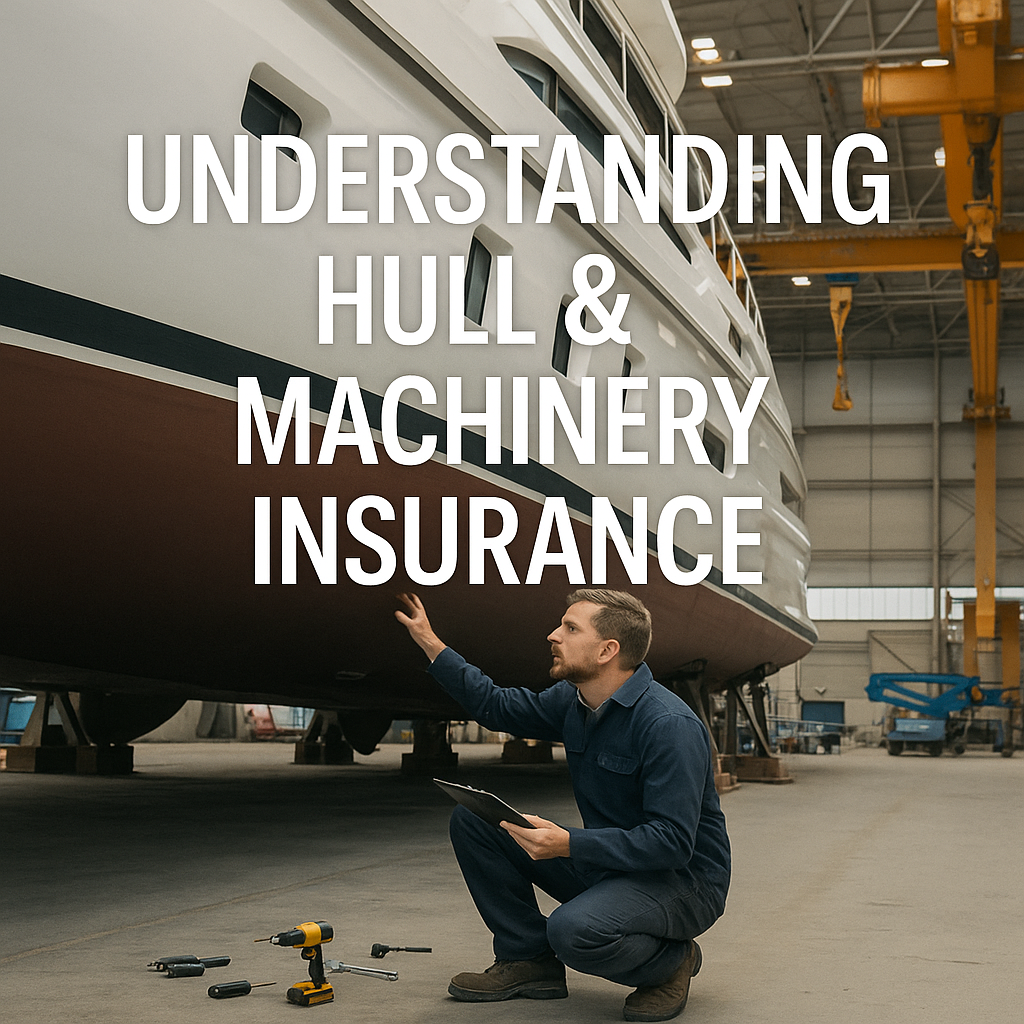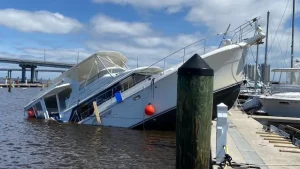What is Hull and Machinery Insurance, and why should every seafarer understand it? Discover what it covers, how it works, and how it safeguards your vessel’s core assets in this detailed, easy-to-understand 2025 guide.
The sea is a world of possibilities—but also of risk. From engine breakdowns in open waters to hull damage in congested ports, the financial cost of marine accidents can be catastrophic. That’s where Hull and Machinery (H&M) Insurance comes in. For any seafarer—whether you’re a cadet, chief engineer, or shipowner—understanding this critical insurance is no longer optional. It’s essential.
In this guide, we demystify Hull and Machinery Insurance, explain what it covers (and what it doesn’t), explore recent developments, and highlight why this coverage is central to modern maritime safety and operations.
Why Hull & Machinery Insurance Matters in Modern Maritime Operations
Today’s ships are technological marvels, often valued in the tens or even hundreds of millions of dollars. The International Union of Marine Insurance (IUMI) reports that machinery failures now account for nearly 35% of all marine claims, with hull damage close behind. And with the IMO pushing for digitalization and decarbonization, even a minor mishap in the engine room can lead to serious financial loss or delay.
For seafarers, the stakes are personal. If your vessel suffers damage, it affects your safety, employment, voyage schedules, and career continuity. Understanding Hull and Machinery Insurance isn’t just for management—it’s part of every competent maritime professional’s knowledge base.

What is Hull and Machinery Insurance?
Hull and Machinery Insurance is a type of marine insurance policy that covers the physical damage to a vessel and its onboard machinery. It is often referred to simply as H&M Insurance and forms the backbone of any shipowner’s risk management strategy.
It typically includes:
-
Hull damage: Physical harm to the vessel’s structure (e.g., from grounding, collisions, fire).
-
Machinery damage: Damage to main engine, auxiliary engines, boilers, and other critical systems.
-
Equipment: Coverage can extend to navigation and communication equipment, winches, and pumps.
-
Salvage and recovery: Costs related to towing, rescue, and wreck removal (if covered under terms).
-
Sue and labor clause: Encourages immediate action to minimize losses and expenses during an incident.
This policy is different from Protection and Indemnity (P&I) insurance, which covers third-party liabilities like oil pollution or crew injury.
Historical and Legal Context
The concept of Hull and Machinery Insurance dates back to the Lloyd’s Coffee House in 17th-century London, where merchants gathered to share risks associated with sea voyages. Today, these policies are still underwritten following standardized clauses like the Institute Time Clauses – Hulls (ITCH 1/10/83), though newer variations now exist. In the U.S., regulations are influenced by both the U.S. Coast Guard and the Jones Act, while international standards are guided by IMO conventions, Classification Societies (such as DNV, Lloyd’s Register, and ABS), and BIMCO charter party terms.
–
What Does Hull and Machinery Insurance Cover?
To understand what’s covered, it helps to break it down into core categories:
Hull Damage
Includes:
-
Collisions (with another vessel or a fixed object)
-
Groundings
-
Fire or explosion
-
Ice damage (common in northern shipping lanes)
-
Heavy weather damage
Example: A container vessel hits a submerged object in the Mississippi River. H&M Insurance covers hull denting and water ingress repairs.
Machinery Breakdown
Covers:
-
Main engine failure
-
Generator burnout
-
Turbocharger damage
-
Automation system faults
-
Boiler explosion
Example: A 2nd engineer accidentally starts the purifier during maintenance, damaging internal components. The resulting repair costs may be covered if due diligence and clause compliance are proven.
Salvage and Towing
Depending on the policy, costs of professional salvage assistance after an incident may be reimbursed.
Sue and Labor Expenses
If the crew takes action to prevent further loss (e.g., patching a hull breach temporarily), those costs can be claimed.
–
What’s Not Covered?
Exclusions vary by policy but often include:
-
Wear and tear or normal aging of machinery
-
Negligent maintenance
-
War risks (covered under separate war risk insurance)
-
Nuclear events or terrorism (unless explicitly included)
-
Intentional damage or criminal activity
Key Clauses in H&M Insurance
Institute Time Clauses – Hulls (ITCH)
This clause outlines the basic coverage. It is typically valid for one year and includes:
-
Total loss
-
Particular average (partial damage)
-
General average (shared loss expenses)
-
Constructive total loss (cost of repair exceeds vessel value)
Deductibles
Policies have deductibles per incident, often in the range of USD 25,000–100,000 depending on vessel type and age.
Agreed Value vs. Market Value
Most H&M policies use an agreed value to avoid disputes at claim time. This value is settled upfront between the insurer and owner.
Real-World Examples: H&M Insurance in Action
Case 1: Engine Room Fire on Bulk Carrier (2022)
A 56,000 DWT bulk carrier suffered a main engine fire near Galveston. The H&M policy with Zurich North America covered over $2.8 million in damages and repairs. The crew’s prompt action under the sue and labor clause also led to the recovery of emergency costs.
Case 2: Grounding Incident in Alaska (2023)
A small tanker grounded due to poor navigation and fog. While the hull was salvaged successfully, the machinery damage to the propeller shaft system triggered a claim. Classification Society inspection ensured compliance, and Liberty Mutual processed the claim efficiently.
Advances in H&M Coverage (2020–2025)
With maritime technology evolving, Hull and Machinery Insurance has also adapted. Recent innovations include:
-
Cyber protection extensions for integrated bridge systems (source: Inmarsat, 2023)
-
Condition-based monitoring (CBM) to assess real-time engine health, supported by insurers like Wärtsilä Voyage
-
Green shipping clauses offering discounts for vessels using LNG, hybrid, or low-carbon fuels
-
Digital twins used by insurers like DNV to simulate failure scenarios and assess risk premiums more accurately
Challenges and Solutions in H&M Claims
Delayed Reporting
Late reporting of incidents leads to denied claims. Training deck and engine officers in documentation is crucial. Solution: Smart reporting tools integrated with the ship’s logbook can auto-generate incident reports for insurers.
Misunderstanding of Coverage
Crews often misunderstand policy terms, especially deductible responsibilities or the distinction between H&M and P&I. Solution: Regular onboard training and pre-voyage briefings should include insurance responsibilities for officers.
Future Outlook & FAQ
As vessels become more digitized and automated, H&M insurance will expand to cover software failures and cyber-physical damage. Insurers may soon offer dynamic pricing based on real-time data from onboard systems. Expect insurers like AIG, Chubb, and Berkshire Hathaway GUARD to lead in integrating blockchain for claims processing and using AI-based risk modeling.
1. Is Hull and Machinery Insurance mandatory?
It’s not legally required by IMO, but virtually all shipowners carry it to meet charter party obligations and lender requirements.
2. How is the premium calculated?
Factors include vessel type, age, trading area, flag, previous claims, and class notations. A typical range is 0.3–1.5% of the vessel’s value per year.
3. Can a crew member claim from H&M insurance?
No. Crew-related injuries fall under P&I insurance. H&M covers the vessel and machinery only.
4. What happens if machinery damage results from crew error?
If the error was not due to gross negligence and the crew followed procedure, it is often covered under standard H&M clauses.
5. Can older ships be insured?
Yes, but insurers may impose higher deductibles, limit coverage, or require additional surveys and classification compliance.
6. Who decides the repair yard after damage?
Usually the shipowner, in consultation with the insurer and classification society. Some policies allow freedom of choice within reason.
7. What is a constructive total loss?
If the cost to repair exceeds the insured value (often around 75–80%), the vessel may be declared a total loss and compensation paid accordingly.
Conclusion
Hull and Machinery Insurance is more than a financial tool—it’s a safety net that keeps global trade moving and seafarers secure. As maritime risks grow and ship systems become more complex, understanding the details of H&M coverage is not only smart—it’s professional.
Whether you’re studying marine engineering, sailing as an officer, or managing a fleet, make sure you’re not just relying on insurance—you understand it. Ask questions. Read your vessel’s policy. Be part of the safety net.



Hello There. I found your blog using msn. This is an extremely smartly written article.
I will be sure to bookmark it and return to read extra of
your helpful information. Thanks for the post. I’ll definitely
return.